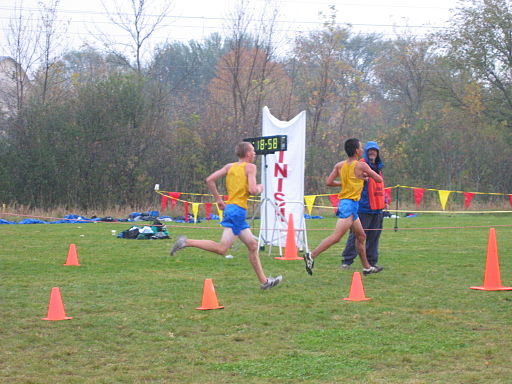True story: Tom was once a very good recreational runner. Ten years ago, he fell during a race and injured his knee. Surgery was scheduled. When asked for details, Tom shrugged and said, “A torn ligament, and some bone damage.
But he wasn’t sure which ligament was torn or what it did. He didn’t know whether the bone damage was to his thigh (femur) or lower leg (tibia and fibula). The surgeon had explained, but all Tom heard was the word “surgery.”
He was introduced to the physical therapist who would work with him, but didn’t spend time talking to the PT before the operation, nor ask questions afterwards. He just went to each scheduled session, did what he was told to do, and followed his home program once the acute phase was over.
But at home, he did his rehab workout while daydreaming or watching TV, essentially merely going through the motions. Worse, he never understood that there was a difference between the pain of the body mending itself and the pain of trauma. So when he felt discomfort while working out, he’d back off. The result was, he never fully rehabilitated his knee.
Tom favored the leg after surgery. He didn’t know that an important part of physical therapy is correcting the normal favoring process, of physically “unlearning” the muscle memory adaptation of putting more weight on the uninjured limb and being slightly tentative with the surgically repaired one.
He didn’t know that the adaptation, unless eliminated while the injury heals, almost always results in a muscle imbalance.
A few years later, Tom fell during another race, spraining the previously injured knee. A few years after that, he fell again, this time tearing his meniscus. It needed arthroscopic repair. Again, he did the prescribed rehab without learning much about his knee or the injury.
As time passed, Tom noticed that the frequently injured leg was weaker than his “good” leg. He believed that there was nothing he could do about it.
More time passed. Now it was the summer of 2013. But this year, for the first time, he didn’t enter his favorite marathon. “It hurts when I run long distances,” he explained. Doctors couldn’t find a cause for his running pain. He never thought about going to a biomechanist, a specialist who could analyze his running gait and provide a rehab program to strengthen the weaker leg, thus improving his performance while helping to prevent further injuries.
Tom can’t run as much anymore, and he misses it a lot. He no longer plays tennis or skis. He still doesn’t know much about his original knee injury, but he blames it for changing his formerly athletic life.
But in fact, there was no reason for him to have recurring damage from that first injury and surgery. Even elite athletes who may have had half a dozen joint surgeries still take their place on the podium and still win medals. It was willful ignorance that caused Tom’s problems.
Almost every athlete, whether recreational or elite, will suffer some hurt during their sports career. They should learn exactly which tissues or bones are injured, and what the injury is. They should do the research, easily done online, about the surgical repair; as well as the physical therapy required. There should be a detailed discussion with the therapist about the goal of the PT.
It’s never just a matter of rebuilding strength. After any surgery, the tissues contract and need to be stretched out. The full range of motion needs to be restored. Any shifting of extra work to an uninjured part of the body must be firmly negated in the muscle memory, and the athlete has to concentrate on balancing the workload so the favoring of one limb over the other is completely eliminated.
Don’t be like Tom.
———
Wina Sturgeon is the editor of the online magazine Adventure Sports Weekly (adventuresportsweekly.com), which offers the latest training, diet and athletic information.
———
@ 2013, Adventure Sports Weekly
See more at http://adventuresportsweekly.com
Distributed by MCT Information Services
Training: Find out exactly what’s wrong with you
September 5, 2013

0


